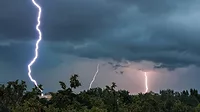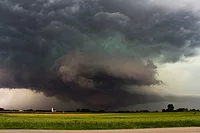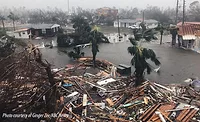$14 Billion in Weather and Climate Disasters for US Last Year

-
1 wildfire event (affecting multiple areas in Alaska and California);
-
2 tropical cyclones (Dorian and Imelda);
-
3 inland floods (affecting the Missouri, Arkansas and Mississippi Rivers); and
-
8 severe storms.
The extreme weather with the most widespread impact was the historically persistent and destructive U.S. flooding across more than 15 states, NOAA said. The combined cost of just the Missouri, Arkansas and Mississippi River basin flooding ($20 billion) was almost half of the U.S. cost total in 2019.
In addition, said NOAA, during the 2010s, the nation saw a trend of an increasing number of billion-dollar inland flooding events. Even after adjusting for inflation, the U.S. experienced more than twice the number of billion-dollar weather and climate disasters during the 2010s (119) as compared with the 2000s.
The billion-dollar disaster damage costs over the last decade (2010-2019) for the U.S. were also historically large, NOAA said — costs exceeded $800 billion from 119 separate billion-dollar events.
Since 1980, the U.S. has sustained 258 billion-dollar disasters overall that have exceeded $1.75 trillion in total damages.
Looking for a reprint of this article?
From high-res PDFs to custom plaques, order your copy today!






